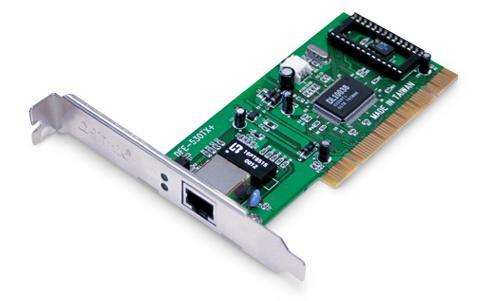- Related articles
- The Things You Need to Know about 10GBASE-CR Ethernet Standards
- All Cisco DWDM-XENPAK-46.92's information (List price, Specs, Datasheet PDF, Compatibility
- What Is GYTY53 Fiber Optic Cable?
- Optical Transceivers for Cisco WS-C3560CX-8XPD-S Switch
- All Cisco CWDM-SFP-1490's information (List price, Specs, Datasheet PDF, Compatibility mat
- All Cisco XENPAK-10GB-SR's information (List price, Specs, Datasheet PDF, Compatibility ma
- All Cisco DWDM-XENPAK-58.17's information (List price, Specs, Datasheet PDF, Compatibility
- Optical Transceivers for Cisco IE-2000-8TC-B Switch
- Applicable to 100BASE-F Standard Optical Transceiver Models
- All Cisco WSP-Q40GLR4L's information (List price, Specs, Datasheet PDF, Compatibility matr

A network interface controller (NIC, also known as a network interface card, network adapter, LAN adapter or physical network interface and by similar terms) is a computer hardware component that connects a computer to a computer network.
Early network interface controllers were commonly implemented on expansion cards that plugged into a computer bus. The low cost and ubiquity of the Ethernet standard means that most new computers have a network interface built into the motherboard.
Modern network interface controllers offer advanced features such as interrupt and DMA interfaces to the host processors, support for multiple receive and transmit queues, partitioning into multiple logical interfaces, and on-controller network traffic processing such as the TCP offload engine.

Network Card Settings
Speed and Duplex: Allows you to select the desired speed and duplex of the network adapter, the default of which is usually auto negotiation.
Gigabit Master Slave Mode: Determines which end of the connection designated as the master; the other of which would be the slave. When left at the default setting (Auto Detect or Hardware Default) the devices automatically negotiate this based upon the IEEE 802.3ab standard: multi-port devices such as switches become the master when connected to a single port device. If both ends are multi-port devices, the one with higher seed bits becomes the master.
MAC Address: Enables you to enter a MAC address for the adapter, overriding the default MAC address. This is an example of how easy it is to bypass MAC address filtering techniques; do a simple packet capture to find an authorized MAC address and apply it here in the advanced settings. However, a more legitimate use of this could be changing the MAC to match the address authorized by your ISP when you’re connecting a PC directly to the modem.
Log Link State Event: This allows you to enable or disable logging of the adapter’s link state changes (such as up/down, duplex mismatch, and STP detection) in the system logs.
QoS Packet Tagging: Enables the adapter to send and receive 802.1p QoS and 802.1Q VLAN indications.
Set up Network Card
Below Are the Step by Step Instructions to Setup Network Card
Set Jumpers
Before installing the Network Card, verify that the jumpers are properly set. Today, most computers do not have jumpers for a network card installation and allow for the Network Card to be setup and configured through software or Plug-and-Play. If available, it is recommended that this be used.
Install into Expansion slot
Today, network cards connect to the PCI slot. Locate an available slot within the computer and gently push the card into the slot until it snaps into place. Once the card is in the expansion slot, place a screw into the top of the card to hold the card into position.
Attach internal cables
Most network cards will not include internal cables, but you may find Wake-On-LAN cable, which wakes the computer when network activity is present. If cables are included with the network card and your computer supports these cables, install the cables now.
Attach external cables
Once the network card has been physically installed, replace the case panel and connect the keyboard, mouse, and monitor as well as the power and network cables. Then, connect the other end of the network cable to the network outlet on a hub, switch, or router.
Software setup
Once connected, turn the computer on and install the drivers for the Network card. If you do not have drivers for your network card or the network card drivers included appear not to work, you can find links to network drivers on our network card driver’s page.
Summary
Once the Network card has been successfully installed, set the configuration values for the network card in the software. The method of configuring this may vary depending on the network as well as its values; if this is a corporate or business computer and you are unsure of the network values, it is recommended you contact the network administrator for the values.





































































